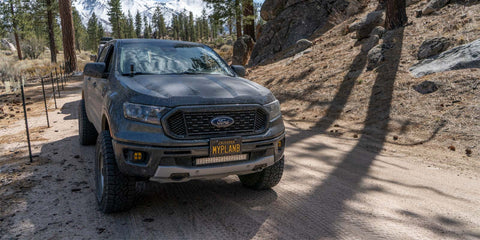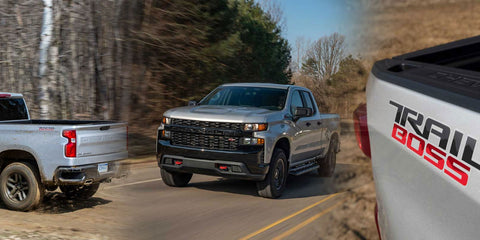Eibach Sportline Install
Overall the difficulty level for a spring install is intermediate. Installation on suspension components can be daunting if you’ve never done it but it isn’t exactly the most complicated process either. The most attention and care must be taken when working around CV axles and brake lines as you can damage these components, and around compressing the springs, as you can damage yourself. Forever. If a compressed spring gets loose it can impale and kill you. Safety first!
As for tools, you’re going to want to rent a spring compressor. You can drop the strut assembly out of the car without one but you will need one to reassemble it with the shorter spring. Outside of that you’ll just need the various sized wrenches and sockets.
Watch some tutorials, get the right tools, and take your time. If you don’t think the car looks as low as it should, don’t worry. The springs will settle a bit after they are installed. Give yourself about a week or a few hundred miles of driving and the car will drop slightly. At this point it’s time to get an alignment. Any time you change the ride height of the vehicle you need to adjust the alignment to match. You may need to call around to different shops because not all will be able to align lowered vehicles due to clearance issues.
Performance Upgrade / Ride Review
- Less body roll, car feels planted
- More confident lane changes
- Faster cornering
- More stability at high speeds
- Less squat and dive under hard acceleration or braking
- Street corners and on/off ramps can be taken considerably faster
- Emergency stops or sudden steering inputs are safer and more controlled
- It cannot be overstated the importance of simultaneously upgrading your tires. If you upgrade your springs they will exceed the performance of the factory installed tires. You can still drive safely without doing so but the benefit of the springs is not being maximized.
Put plainly, the Civic is an absolute blast to drive after putting the Sportline lowering springs on. Steering feels more precise and sharp. The car feels more predictable and stable at any speed. It’s breathtaking how fast you can take sweeping off-ramps and curvy mountain roads. It’s just a ton of fun and totally worth the cost. Don’t forget to consider the extra fuel cost… you’ll want to drive around just to drive around. It really is drastically different and one of the first mods we would do to any car.
Springs with Factory Shocks
In general it isn’t the greatest idea to run lowering springs on the shocks that come factory-installed on your vehicle. Compression travel (the space the shock has to compress downwards) is reduced, meaning you are more likely to bottom out. More bottoming out means the shock will wear faster. Lowering springs usually have an increased spring rate. They are stiffer. The factory shocks are not designed to work with this stiffer spring which can introduce a bouncier ride feel. The initial part of the shock’s stroke is going to be pre-compressed, meaning you are losing the part of the shock’s travel that handles smaller bumps and rough roads which will give you a harsher ride.
The severity of your lost ride comfort is going to vary depending on the vehicle. On the 10th generation Civic we lucked out and ride quality was almost indistinguishable from stock. This means for the time being we enjoyed the performance benefits of the Eibach springs but didn’t really sacrifice much in comfort. That being said, your driving style and the road conditions you frequent could definitely result in the shocks prematurely wearing out.
Surprisingly enough, given 30K miles on the not so smooth Los Angeles streets and quite a few camping trips over washboard dirt roads, the ride quality did not degrade drastically on our test vehicle. We are still left wondering what a pair of properly valved shocks would have done to the ride experience but, for a daily driver that doesn’t see any track time, the ride was acceptable. Your mileage may vary.
For a full breakdown on stock shocks with lowering springs check out our article: Lowering Springs and Factory Shocks: A Doomed Romance
Cons of Lowering Springs
- No height adjustability. Practically speaking this could be a bigger deal depending on where you live, most people will be ok with a “set it and forget it” approach, however you may find that you want the front to be just a little bit lower and you won’t have the option of dialing that in without coilovers.
- Inadequate stock shocks. See above. Factory shocks need to be stiffer, if your vehicle has shock offerings, especially if they are performance oriented or better yet, made for lowered ride heights, definitely take advantage of that.
- Reduced ability to haul loads. A fully loaded hatch makes the rear end sag, if you load up your hatch for a road trip, camping, or on a run to Home Depot, the rear of the vehicle will definitely sag under the increased load, this may be ok on stock tires but if you run anything more aggressive you will want to look into adjustable camber arms to make sure you don’t rub.
- You’ll want new tires. Even if you have tread left on your tires you’re going to want better ones. The grip limitations of the factory tires become very apparent when you improve the suspension. This isn't a fault of the springs but just the nature of the upgrade, you’ll want to match your tires performance to match that of your springs.
- You will need to drive differently. Virtually any time you modify a vehicle’s performance you are going to have to change the way you drive it. With reduced ground clearance comes a whole set of altered techniques for getting around town safely and without damaging your vehicle. This isn’t a big deal but it is something you need to consider. Don’t worry we’ve got you covered: How to Daily Drive a Lowered Vehicle
Consider the Total Expense
On the surface lowering springs are relatively cheap. For around 300 bucks or so you can lower your car. Or can you? Bare minimum you’re going to need an alignment. This will run you around 100-200 dollars. And if you don’t feel confident doing the install yourself (assuming you already own the tools and have the time) you’re going to need to pay for that. Expect another 3-5 hundred dollars there. So that initial $300 spring purchase is really $800 or more. Adjustable camber arms add around $120 if you want to make sure you have even tire wear (you should… tires ain’t cheap) and/or if you’re trying to fit some beefier rubber. Speaking of that beefier rubber, you’ll want to mount those stickier tires to a wider wheel. So now we’re looking at wheels and tires on top of everything else. You could easily spend $3,000+ getting this all set up properly. Suddenly, dropping a thousand bucks or so on coilovers, and getting all the benefits that come with them, seems worth the wait. You’re going to have all these other expenses anyway, why not save up for the coils and get a better, safer, adjustable solution? We get it though… It’s a lot of money either way. And if you’re ballin’ on a budget like we were, just snagging a set of springs in the meantime can be an economical way to get a taste of performance on your car while you save up for the total package.
Next Upgrades?
We had hopes of keeping the Civic a bit longer to test out more suspension components and eventually take it to the track. However, with as much as this car was used for camping, it was pretty obvious a 4x4 was a better option for the owner. A dedicated track car that doesn’t have to do daily driver duties may be in the works for the future. Had the Civic stuck around longer we would have loved to try performance sway bars for the front and rear for even more reduction in body roll and reduced understeer. Bilstein shocks to go with the Eibach springs would have been a good next step to take before making the jump to coilovers. Since this was a Sport, and not a Type R or an Si, unfortunately there are not as many coilover options, but there are a few companies, like BC Racing, that could have spent some time in our wheel wells.
For more information about lowering vehicles hit up our Lowering Mega Guide



















